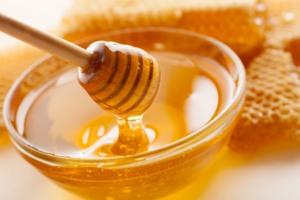What's On This Page?
ToggleIn an era where antibiotic resistance is becoming a mounting concern, natural alternatives to antibiotics may be a solution.
Many individuals are seeking natural alternatives to combat infections without the drawbacks of traditional antibiotics. Living in a post-pandemic era, this is particularly important as many people want to improve immune function. Let me present a compelling case for exploring nature’s pharmacy. Please do consult with your physician about what’s right for you.
Together, we’ll take a look at 7 natural remedies that may offer antimicrobial activity, without compromising your gut flora or contributing to the growing problem of drug resistance.
Here are 7 Different Natural Alternatives to Antibiotics
1. Brazilian Propolis: Hailed as a versatile defender against infections, Brazilian Propolis, courtesy of diligent bees, has shown promising results in recent studies, including its ability to combat dental biofilms like S. mutans. Its wide-ranging immune-boosting properties make it a go-to for colds, flu, and sore throats.

2. Cat’s Claw: With its potent antimicrobial and antiviral prowess, Cat’s Claw is not just for traditional uses anymore. It’s finding its place in modern regimens against challenging conditions like Lyme disease and HIV, offering anti-cancer benefits and inflammation reduction by targeting TNF alpha. This is one the best natural alternatives to antibiotics.
3. Colloidal Silver: A familiar name in the natural health community, colloidal silver’s ability to tackle biofilms, particularly those involving Staphylococcus aureus, underscores its role in managing nasal staph infections and more. Its broad-spectrum activity makes it a valuable topical agent as a natural alternative to antibiotics.
4. Oregano Oil: Beyond its culinary appeal, oregano oil is a formidable foe against fungi, parasites, and even formidable bacteria like MRSA and C. difficile. Its key components, carvacrol and thymol, are backed by research highlighting their effectiveness in gastrointestinal infections and a plethora of other health issues. This is one of the best natural alternatives to antibiotics… actually antifungals more than antibiotics! You can spice your food with it so easily!
5. Teasel Root: A beacon of hope for those battling Lyme disease, Teasel Root’s ability to draw bacteria from muscle tissue illustrates nature’s ingenuity in reaching areas often inaccessible to conventional antibiotics.

6. Iodine: This elemental necessity goes beyond its antiseptic reputation, playing a crucial role in metabolic reactions and immune responses. Its involvement in PHAGOCYTOSIS and antioxidant properties emphasizes the importance of maintaining adequate iodine levels for overall health.
7. Manuka Honey: Distinguished from its sweet counterparts, Manuka honey has garnered attention for its antibacterial might, particularly against MRSA and Helicobacter pylori.
Its efficacy on skin and gut infections highlights the healing potential of this natural nectar. Certainly, the tastiest of the natural alternatives to antibiotics!
If you’d like to support your immune system’s structure and function, consider Immune Script® it is a blend of prebiotics with herbal extracts that have T cell and B cell activity.* CLICK HERE to learn more.
Summary
In sum, the quest for natural antibiotic alternatives is not only about avoiding the side effects of conventional drugs but also about embracing solutions that harmonize with our body’s ecosystem. I hope this insightful exploration into these alternatives offers a refreshing perspective for you.
As always, it’s crucial to discuss any changes to your health regimen with a healthcare professional to ensure safety and efficacy. Through this blend of ancient remedies and modern science, I hope you (I hope all of us) will find a more sustainable path to combating infections and preserving our health!

Suzy Cohen, has been a licensed pharmacist for over 30 years and believes the best approach to chronic illness is a combination of natural medicine and conventional. She founded her own dietary supplement company specializing in custom-formulas, some of which have patents. With a special focus on functional medicine, thyroid health and drug nutrient depletion, Suzy is the author of several related books including Thyroid Healthy, Drug Muggers, Diabetes Without Drugs, and a nationally syndicated column.

